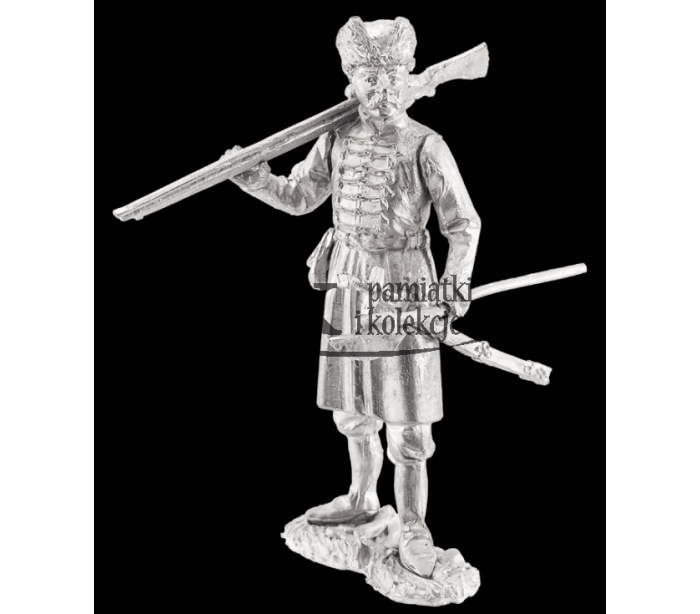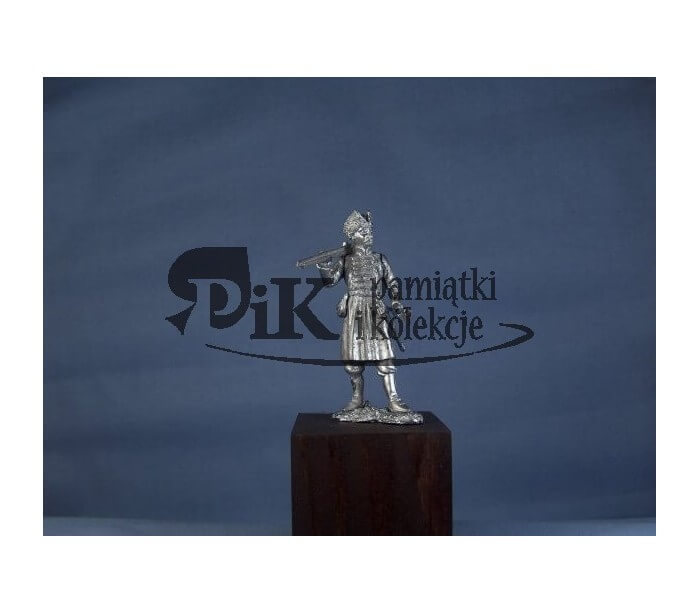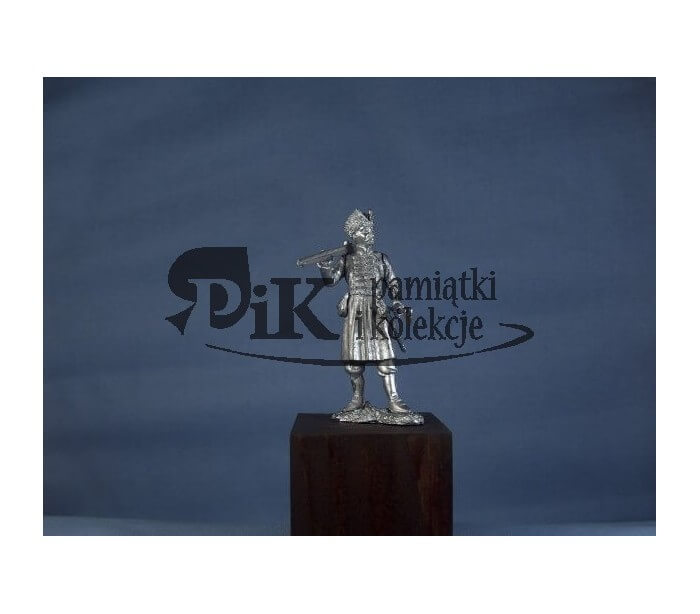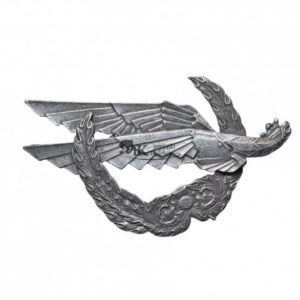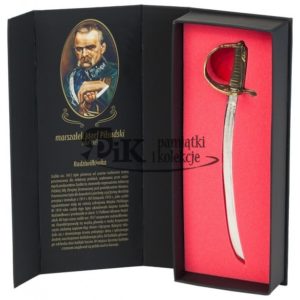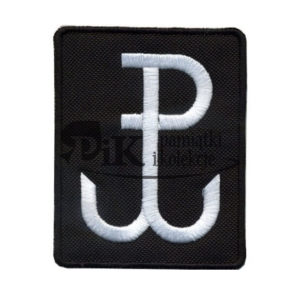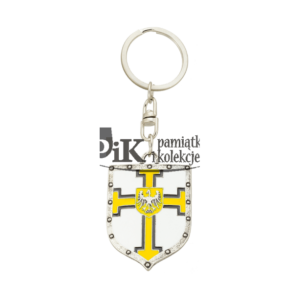Dzieje Oręża Polskiego
Piechota Wybraniecka
Formacja ta z węgierska zwana Hajdukami pojawiła się na terenie Rzeczypospolitej wraz z panowaniem króla Stefana Batorego w drugiej połowie XVI wieku. Przygotowując się do wojny z państwem moskiewskim Batory w latach 1578-79 przeprowadził reorganizację i poważnie wzmocnił armię.
Aby zapewnić sobie siły zdolne do zdobywania umocnionych twierdz, król zdecydował się powołać piechotę wybraniecką złożoną z chłopów z królewszczyzn. Z każdych 20 łanów postanowiono wyekspediować jednego piechura, który miał stawić się do służby wojskowej. Ziemia wybrańca była zwolniona od wszelkich powinności. W zamian był on zobowiązany do stawienia się na wezwanie w błękitnym mundurze określonego kroju i z uzbrojeniem, na który składały się rusznica z prochem i kulami, szabla oraz topór, który w XVII wieku zastępowany był berdyszem. Piechota wsławiła się skutecznością pod Wielkimi Łukami w 1580 roku i pod Pskowem na przełomie 1581 i 1582 roku.
Figurka metalowa o wymiarze 54 mm
The History of Polish Arms
Piechota Wybraniecka (Chosen Infantry)
This formation, also referred to as Hajduk from the Hungarian language, appeared on the territory of the Polish-Lithuanian Commonwealth with the reign of King Stephen Báthory in the second half of the sixteenth century. In preparing for war with the Grand Duchy of Moscow in the years 1578-1579, he reorganized and considerably strengthened the army. To ensure a force capable of conquering fortified strongholds, the king decided to establish Piechota Wybraniecka, an infantry formation composed of “royal” peasants. Out of every 20 “łans” (łan is an old unit of field measurement used in Poland) one infantryman was sent to military service. The land of the chosen soldier was exempted from all duties. In return, he was obliged to report at a command, dressed in a blue uniform of a particular style and bearing weaponry consisting of a matchlock gun with gunpowder and bullets, a sword and a battle-axe, which in the seventeenth century was replaced by bardiche. The infantry became famous after the Siege of Velikiye Luki in 1580 and at Pskov at the turn of 1581 and 1582 year.
54mm metal figurine


